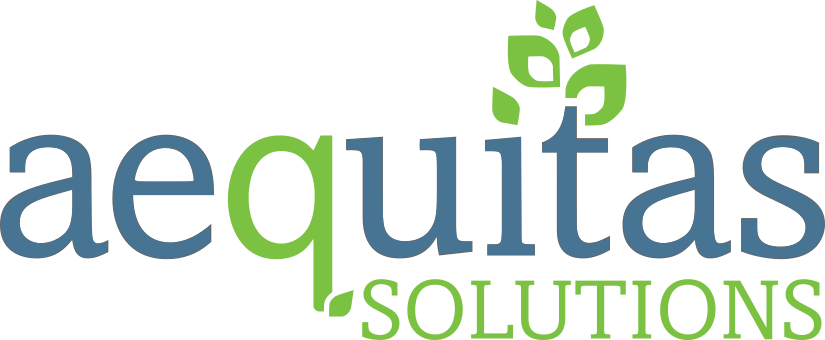Technology touches nearly every aspect of school operations, from managing enrollment to collecting and analyzing data, meeting compliance requirements, and more. Adopting many disparate Edtech solutions often creates long-term limitations as needs change, system costs rise, and integrations become more complex. In response, districts are shifting their approach to technology. Instead of relying on piecemeal EdTech tools, they’re investing in integrated platforms that can efficiently scale over time.
This shift calls for EdTech infrastructure that prioritizes long-term value and educator/vendor partnerships over quick fixes. Scalable systems result from deliberate, future-ready decisions that help lower ongoing costs and support sustainable operations. When technology systems are built to work together and scale with district goals, they become a key driver of efficiency and student success.
What Makes EdTech Infrastructure Scalable?
Scalable infrastructure means having direct input with your vendor so they provide technology that can expand, shift, and adapt as your district grows or changes direction. It accounts for:
- Enrollment change
- Policy changes at the state or federal level
- Shifting instructional models
- Evolving student and staff needs
Rather than layering new tools on top of existing systems, a scalable strategy considers how all your platforms connect, communicate, and contribute to your district’s larger goals.
Why EdTech Scalability Matters
Districts have to navigate data privacy requirements, funding changes, teacher shortages, and more. When Edtech infrastructure isn’t connected and built to scale, districts become stuck with siloed systems, rising costs, and frustrated users.
With the right strategy, scalable infrastructure can offer a range of long-term benefits. It helps prevent redundancies across systems, reducing both confusion and unnecessary spending. When tools work together seamlessly, staff workflows become more efficient, and training becomes easier and more consistent across departments.
For example, a district that integrates its SIS with enrollment, food service, and data analytics can eliminate duplicate data entry and reduce the need for separate logins or manual uploads. This streamlines operations and cuts costs tied to maintaining multiple third-party systems.
Compliance and reporting also become simpler since all data is unified in a scalable infrastructure. Staff can pull attendance, demographic, and performance data from one system, eliminating the need to compile reports manually across multiple platforms. This reduces the risk of errors during audits or CALPADS submissions and ensures faster, more accurate reporting.
5 Strategic Moves to Build Scalable EdTech Infrastructure
1. Consolidate Where You Can
One of the biggest challenges with district technology is system fragmentation; educators use multiple disconnected platforms each requiring login credentials, training protocols, and support models. Over time, this “tool sprawl” leads to confusion, redundancy, and increased administrative burden.
Districts can reduce complexity and improve efficiency with integrated tools combining multiple workflows into one system. For example, when a Student Information System (SIS) supports enrollment, behavior tracking, and real-time data analytics, staff spend less time switching between tools and more time focusing on student success.
2. Plan With Change in Mind
District needs evolve over time. What works today may not accommodate future growth, programmatic changes or data security needs. Building flexible infrastructure from the beginning helps avoid costly transitions later.
Scalability starts by asking the right questions:
- Can this platform support additional schools, users, and data?
- Can this tool support data security and 3rd party integrations?
- Does the vendor have a roadmap that evolves with educational priorities?
Districts anticipating evolving education practices often choose cloud-based systems that can accommodate these changes without requiring major overhauls. By planning for scale from the beginning, districts can avoid costly transitions later and ensure a smoother path forward.
3. Prioritize Interoperability
Even the most advanced tools can lose value if they don’t work well together. Interoperability is essential for breaking down silos and improving data quality. Choosing platforms that support common data standards and integrate well with your existing systems can reduce manual entry and ensure data consistency across departments.
For example, a district looking to improve data flow might choose a tool that seamlessly integrates student registration, forms and surveys, and nutrition services. This interconnected system ensures that accurate, up-to-date information is accessible across teams, reducing duplication and improving reporting.
4. Plan for Ongoing Training and Support
Scalable infrastructure also includes the people who use it. A successful long-term plan involves continuous training and support to help staff grow alongside evolving tools. Districts can create a learning culture by offering ongoing professional development aligned with their tech stack.
Support from vendors also plays a key role. Platforms with strong training materials and responsive help desks can ease the transition and encourage user confidence. When staff feel supported, they’re more likely to fully adopt new systems, use features effectively, and contribute to long-term success.
5. Align Tech with District Goals
Technology decisions shouldn’t happen in isolation. Scalable infrastructure should reflect the district’s broader goals, like improving academic outcomes, promoting equity, or supporting teacher retention.
District leaders can start by asking how each tool contributes to their mission and whether they collect the data needed to measure impact. Some districts create cross-functional committees to review their tech stack through the lens of specific goals, such as increasing family engagement or expanding multilingual access. This helps ensure that technology investments are efficient and aligned with broader district goals.
Avoiding EdTech Platform Fatigue and Short-Term Fixes
It’s tempting to grab the newest solution when a need arises. But when decisions are made in isolation, tech bloat sets in. Staff feel overwhelmed by the number of systems they have to learn, and administrators lose visibility into what tools are effective.
To prevent this, districts should conduct regular audits of their EdTech portfolio to identify which tools are truly being used and which are no longer serving their purpose. Redundant or underutilized systems should be phased out to reduce clutter and confusion. Establishing a district-wide process for evaluating and approving new technology is also important. This intentionality protects your budget and your staff’s time and energy.
Future-Proofing Your EdTech Investments
Future-proofing is about choosing systems that can grow and adapt as your district evolves. Instead of chasing every new trend, the focus should be on systems built for flexibility, especially those with configurable workflows. These solutions allow your team to adjust processes as instructional models, policies, or staffing needs change without needing to replace your entire EdTech stack.
Vendor reliability also plays a major role. Look for partners that offer strong, ongoing support and provide regular product updates based on district feedback and emerging best practices. A future-ready platform evolves with its users’ needs and the education landscape’s requirements.
Ask tough but necessary questions during procurement: What does implementation look like? How is data migration handled? What training and onboarding resources are available? And perhaps most importantly, can the system adapt to support your district over the next five years?
When districts make purchasing decisions with these criteria in mind, they’re not just buying software, they’re building a foundation that can support growth, adaptability, and long-term success.
Q SIS: A Foundation That Changes With You
District leaders benefit most from tools that work seamlessly together. Infrastructure becomes a strategic advantage when systems are connected, user-friendly, and aligned with district goals. Choosing a platform designed for both current needs and future change is essential to making technology a strategic advantage.
Q is a comprehensive SIS built to support long-term growth and change. With integrated modules for enrollment, intervention, analytics, and more, Q helps districts reduce third-party sprawl and streamline operations. It’s designed with configurability, compliance, and future scalability in mind, making it the foundation for a modern, resilient tech infrastructure.
Contact us to learn how Q SIS helps districts reduce complexity, improve workflows, and future-proof their investments.


